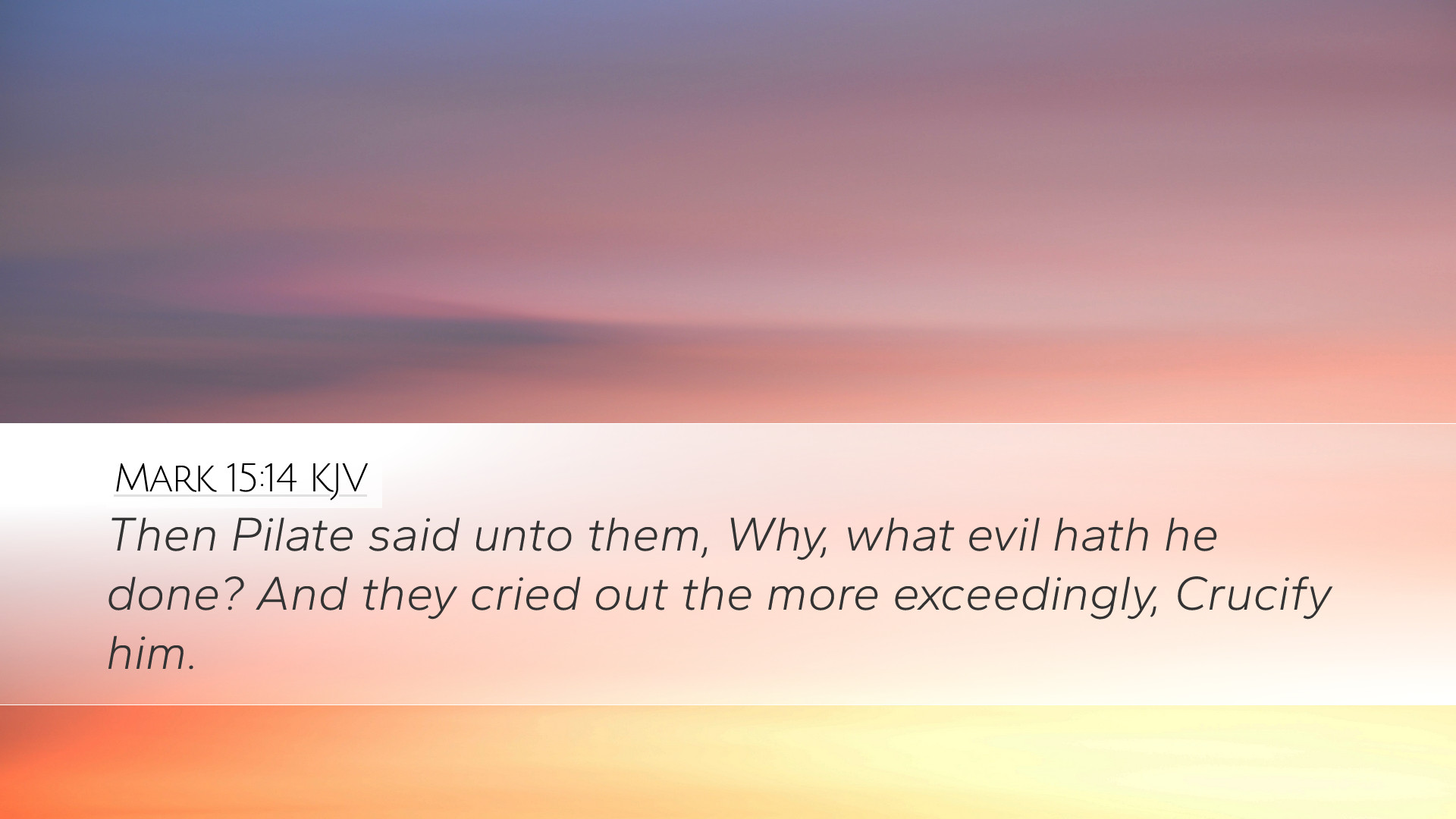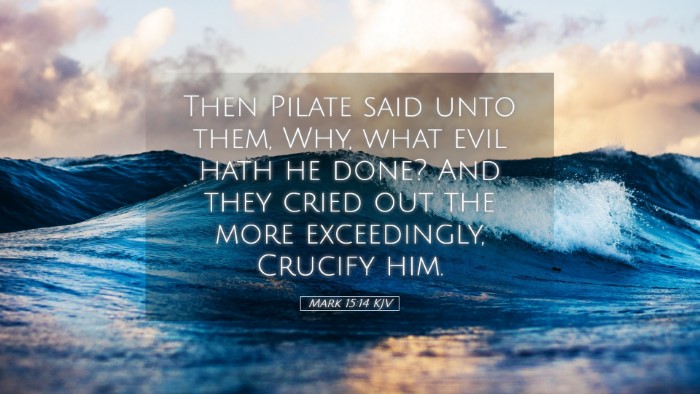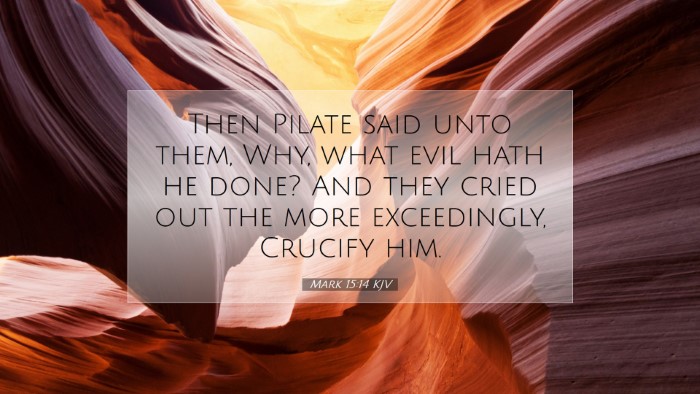Bible Commentary on Mark 15:14
Verse Reference: Mark 15:14 - “Then Pilate said to them, 'Why? What evil has He done?' But they cried out all the more, 'Crucify Him!'”
This verse occurs during the trial of Jesus before Pontius Pilate, highlighting the pivotal moment where the crowd demands His crucifixion. The interplay between Pilate’s reluctance and the fervor of the mob offers profound theological and moral insights.
Contextual Analysis
The historical and cultural backdrop is vital to understanding this verse. Pilate, the Roman governor, is portrayed as a figure of authority caught between the Jewish leaders and the passionate crowd. His question, “What evil has He done?”, emphasizes his struggle with the injustice being perpetrated against Jesus.
Commentary Insights
Matthew Henry's Commentary
Matthew Henry discusses Pilate's questioning of the charges against Jesus, expressing his surprise at the crowd's vehement insistence on crucifixion despite the absence of tangible evidence of wrongdoing. Henry notes that this obstinate demand illustrates the depths of human depravity and the influence of mob mentality.
Henry emphasizes the contrast between the innocence of Christ and the guilt of the crowd demanding His death. He reflects on the futility of attempting to reason with a biased crowd, illustrating a profound moral lesson about the dangers of joining in with collective wrongdoing without discernment.
Albert Barnes' Commentary
Barnes, in his analysis, highlights Pilate's role as a reluctant judge who recognizes Jesus' innocence. Pilate's inquiry into "What evil has He done?" signifies an attempt to absolve himself of responsibility for the impending injustice. Barnes draws attention to Pilate's fear, suggesting that his political aspirations clouded his judgment, which ultimately led to tragedy.
Furthermore, Barnes emphasizes the crowd's use of the phrase “Crucify Him!” with increased intensity, reflecting a hardening of their hearts and a rejection of the truth. This repeated cry symbolizes humanity's propensity to choose destruction over righteousness, underscoring the need for believers to seek justice and truth in a world often swayed by popular opinion.
Adam Clarke's Commentary
Adam Clarke presents a detailed examination of the pressures faced by Pilate. He discusses the political ramifications of failing to appease the crowd, illustrating how Pilate’s fear of insurrection shaped his decisions. Clarke points out Pilate's attempts to accommodate both justice and political stability, demonstrating the complex nature of governance and public sentiment.
Clarke observes that the insistence on crucifixion without justification signifies not just a historical moment, but a theological reality wherein sin demanded a sacrifice. This framework presents the necessity of Christ’s sufferings and the ultimate sacrifice for humanity’s redemption.
Theological Implications
The broader implications of Mark 15:14 delve into themes of innocence, injustice, and the consequences of collective sin. The stark portrayal of Jesus' trial serves as a reminder of the cost of discipleship and the challenges faced when standing for truth in the face of societal pressures.
- The Nature of Evil: The outcry of the crowd reflects humanity's propensity towards evil when swept up in collective fervor. This verse serves as a cautionary tale against the dangers of conforming to popular opinion without moral reflection.
- The Role of Authority: Pilate's role embodies the complexities of governance, where leaders must balance justice with public sentiment. His dilemma prompts reflection on the responsibilities of those in positions of power, particularly in matters of faith and morality.
- Fulfillment of Prophecy: The events leading to the crucifixion of Jesus were foretold in scripture, showcasing God's sovereignty over history. The insistence on crucifying Christ not only fulfills prophetic words but demonstrates God’s ultimate plan for humanity’s salvation.
Practical Applications
For pastors, students, theologians, and scholars, Mark 15:14 offers rich terrain for exploration and application:
- Encouragement to Stand for Truth: This passage challenges individuals to stand firm in their beliefs, especially when faced with societal pressure to conform to wrongful actions.
- Reflection on Justice: It invites an examination of the justice system today, urging a quest for righteousness in legal and social frameworks, akin to Pilate’s initial desire for justice.
- Understanding the Cost of Discipleship: The narrative illustrates that following Christ often demands difficult choices, including the willingness to face opposition or persecution.
Conclusion
Mark 15:14 encapsulates a profound moment in the passion narrative of Jesus Christ. Through the lens of public domain commentaries, we glean valuable insights into human nature, governance, and the inexorable truth of the Gospel. As believers reflect on this passage, it serves as a reminder to uphold justice, advocate for the innocent, and recognize the eternal significance of Christ's sacrifice.


